The Thin Red Line Flag is a symbol with deep meanings in the firefighting community. It represents the courage and sacrifice of firefighters who put their lives at risk to save others. This flag features a solid black background with a single horizontal red stripe, symbolizing the line of duty faced by fire personnel.
Historical Roots of the Thin Red Line
The concept of a “thin line” emerged from the “Thin Blue Line,” which is associated with law enforcement. The Thin Red Line was adopted by the firefighting community to reflect their critical role in public safety. It gained popularity in the United States around the early 2000s as a way to honor fallen firefighters and support those serving.
The Symbolism Behind the Colors
Firefighter helmets, particularly their colors, carry significant symbolism that reflects the bravery, sacrifice, and danger associated with firefighting duties. Understanding these symbols helps appreciate the profound meaning behind each element of their gear.
Black Background
The black background on firefighter helmets holds deep symbolism within firefighting culture. It serves as a solemn tribute and remembrance for those who have made the ultimate sacrifice in the line of duty. This color choice is not merely aesthetic but carries significant meaning:
- Remembrance: The black background honors and remembers fallen firefighters, ensuring their memory remains a central part of firefighting tradition.
- Tribute: It symbolizes a heartfelt tribute to their bravery and dedication, acknowledging the risks they courageously faced.
The use of black underscores the somber yet profound respect firefighters hold for their fallen comrades. It is a color that signifies respect, honor, and the enduring legacy of those who have given their lives in service to others.
Red Stripe
The striking red stripe across firefighter helmets serves as a powerful symbol of the fire and danger firefighters confront daily. Beyond its visual appeal, the red stripe embodies:
- Symbol of Fire: The vibrant red color vividly represents the flames firefighters battle tirelessly to extinguish.
- Reminder of Danger: It serves as a constant reminder of the perilous conditions and intense heat firefighters encounter during emergency responses.
The red stripe is more than a decorative element; it encapsulates the essence of firefighting—courage, resilience, and readiness to face formidable challenges. Its presence on the helmet signifies not only the physical dangers of the job but also the unwavering commitment to protect and serve communities.
Public Perception and Controversy
The Thin Red Line Flag, revered within the firefighting community for its symbolism of solidarity and sacrifice, has also sparked significant controversy and debate across broader society. Understanding the diverse perspectives surrounding its use is essential for a nuanced discussion about its meaning and implications.
Supporters’ Perspective
Supporters of the Thin Red Line Flag passionately defend its use as a powerful symbol of firefighter unity and valor. They highlight:
- Symbol of Solidarity: The flag serves as a unifying emblem, symbolizing the close-knit bond among firefighters worldwide and their shared commitment to public safety.
- Recognition of Sacrifice: It honors the immense sacrifices firefighters make, often risking their lives in hazardous conditions to protect communities from fire and other emergencies.
- Cultural Tribute: Supporters argue that displaying the flag is a cultural tribute to the bravery and selflessness inherent in firefighting, fostering pride and camaraderie among firefighters.
Critics’ Perspective
Critics of the Thin Red Line Flag express concerns about its perceived connotations and broader societal implications:
- Concerns of Militarization: Some critics contend that the flag’s adoption in various contexts contributes to the militarization of civil services, blurring the distinction between military and civilian roles.
- Political Symbolism: Its appearance in certain political or contentious settings has sparked debate about its appropriate usage and potential political implications.
- Misinterpretation: Critics stress the importance of clearly defining and safeguarding the flag’s intended symbolism to prevent misinterpretation or misuse, particularly in sensitive or controversial situations.
Importance of Dialogue and Understanding
Engaging in open and respectful dialogue is crucial to navigating the complexities surrounding the Thin Red Line Flag:
- Educational Initiatives: Promoting awareness about the flag’s origins, history, and significance can enhance understanding and appreciation of its meaning among the general public.
- Community Engagement: Encouraging discussions within communities allows for diverse perspectives to be heard, fostering mutual respect and deeper insights into differing viewpoints.
- Guiding Principles: Establishing guidelines for the appropriate use and display of the flag helps preserve its integrity as a symbol of firefighter heroism and service.
How the Thin Red Line Flag Enhances Firefighter Camaraderie
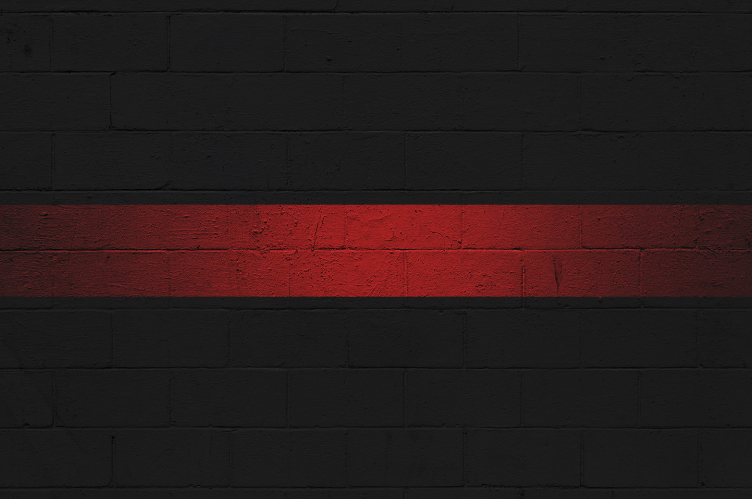
The Thin Red Line Flag is a powerful symbol within the firefighting community, resonating deeply not just publicly but especially among those in the service. Here’s a detailed look at how this flag fosters camaraderie and solidarity among firefighters:
Symbolic Representation of Unity
The Thin Red Line Flag stands as a profound emblem within the firefighting community, embodying the solidarity and shared commitment of its members. It is prominently displayed in fire stations and on apparel to continuously remind firefighters of the deep connections forged through their shared experiences and challenges. This flag not only represents the firefighters’ unity but also serves as a source of strength and pride, reminding them of the community they protect and the brotherhood and sisterhood they are part of.
- Visual Reminder: Acts as a constant symbol of the shared commitment to protecting the community, reinforcing the bond among firefighters.
- Shared Values: The flag embodies the core values of courage, sacrifice, and resilience that every firefighter strives to uphold, enhancing a sense of pride and identity within the firefighting community.
- Symbol of Resilience: Represents the enduring spirit and toughness required in the often perilous and demanding situations firefighters face, bolstering their resolve in the face of adversity.
Impact on Team Dynamics
Displaying the Thin Red Line Flag within fire stations significantly influences the internal dynamics among team members. It enhances a supportive and cohesive environment, which is vital for the effective teamwork required in firefighting operations. The flag acts as a reminder of each member’s role in the collective mission, promoting a culture of mutual respect and accountability. This symbolism is particularly impactful in cultivating a workspace where trust is paramount and every member feels valued and supported.
- Moral Support: The flag is a source of moral support, providing a visual symbol of the community and protection they serve, which is especially comforting during challenging rescue operations and stressful emergencies.
- Sense of Belonging: Encourages a welcoming and inclusive atmosphere for new recruits and visiting firefighters, integrating them into the station’s culture of mutual respect and camaraderie.
- Reinforcement of Team Spirit: Acts as a focal point during discussions and briefings, reminding team members of their shared responsibilities and the importance of working together effectively.
Ceremonial Use
The Thin Red Line Flag is deeply integrated into the ceremonial practices of the firefighting community. It is prominently featured during events that honor the courage and sacrifice of firefighters, such as memorial services and annual remembrance ceremonies. The flag also plays a critical role during positive celebrations such as promotions and graduations from firefighting academies, symbolizing the ongoing commitment and progression within the firefighting profession.
- Remembrance and Honor: The flag is central in ceremonies that honor fallen firefighters, where it symbolizes the community’s respect and profound gratitude for their ultimate sacrifice. It serves as a poignant reminder of the risks firefighters accept in the line of duty.
- Graduations and Promotions: Featured during significant career milestones, the flag symbolizes the firefighters’ commitment to advancing their skills and serving with greater responsibility. It serves as a backdrop that marks new beginnings and continued dedication to the profession.
- Community Events: Used in public events and school visits, the flag helps to educate the community about the roles and risks of firefighters, promoting public understanding and appreciation.
Educational Impact and Community Outreach
The Thin Red Line Flag is instrumental in the educational initiatives and community outreach conducted by fire departments. By integrating this emblem into various public programs, fire departments enhance the visibility and understanding of firefighting as a critical public service. This flag serves not only as a symbol of the firefighters’ bravery and dedication but also as an educational tool that brings the community closer to its first responders.
Role in Fire Safety Education
Fire departments leverage the Thin Red Line Flag in their educational programs to discuss crucial topics like fire safety, emergency preparedness, and the day-to-day responsibilities of firefighters. These programs are often targeted at community centers, schools, and public events, where the flag is displayed prominently to draw attention and lend gravitas to the proceedings.
- Interactive Learning: Firefighters use the flag to engage participants, particularly young students, making learning about fire safety more interactive and memorable.
- Visual Teaching Aid: The flag serves as a visual aid that helps in explaining the various aspects of firefighting work, from responding to emergencies to fire prevention techniques.
Community Outreach and Engagement
The Thin Red Line Flag symbolizes the protective role firefighters play in the community, making it a powerful tool for outreach efforts. During parades, public ceremonies, and community gatherings, the flag is often displayed to symbolize the presence and readiness of fire services.
- Symbol of Service and Protection: At community events, the flag reminds citizens of the dedicated service firefighters provide and the risks they endure.
- Tool for Building Relationships: It helps in fostering a positive relationship between the fire service and the community, encouraging dialogue and cooperation.
Impact on Public Perception
The use of the Thin Red Line Flag in public interactions plays a vital role in shaping how the community perceives and interacts with their firefighters. It humanizes the profession, highlighting not only the dangers firefighters face but also their commitment to protecting lives and property.
- Enhances Respect: The presence of the flag at educational and outreach events helps elevate respect for firefighters, making their critical role more visible and appreciated.
- Promotes Understanding: It educates the public about the complexities and challenges of firefighting, leading to greater community support and empathy.
Thin Red Line Flag Merchandise and Pricing
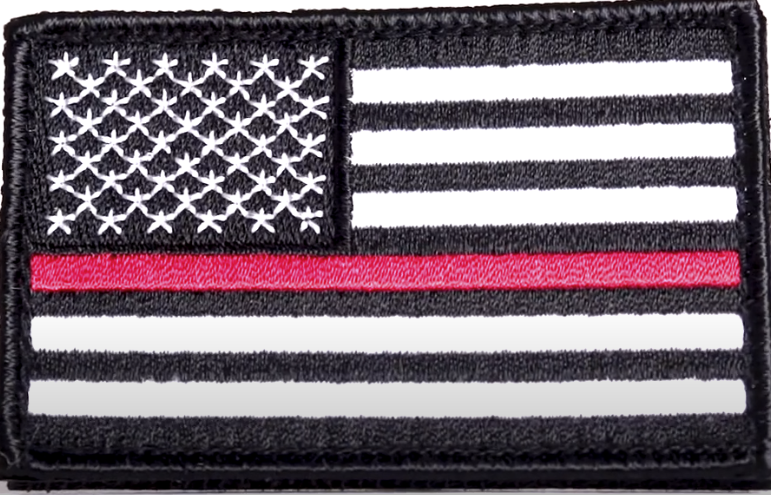
A variety of merchandise featuring the Thin Red Line Flag is available, ranging from flags to apparel. Here’s a quick look at the typical costs:
Overview of Merchandise Types
The merchandise featuring the Thin Red Line Flag caters to a wide array of preferences and uses, from personal wear to vehicle accessories. Each item serves as a symbol of support for firefighters and can be seen in both casual and formal settings.
- Flags: Typically used by fire departments, in homes, or during public and private ceremonies to show support and respect for firefighters.
- Apparel: Includes t-shirts, hoodies, caps, and more, often worn by off-duty firefighters, their families, and supporters.
- Accessories: Ranging from car decals to wristbands and keychains, these items are accessible ways for individuals to show their support daily.
Detailed Pricing Guide
To help potential buyers make informed decisions, here is a detailed table of the typical costs associated with Thin Red Line Flag merchandise:
| Item | Average Cost | Common Uses |
| Flag (3×5 feet) | $20 – $30 | Display at fire stations, homes, events |
| T-shirt | $15 – $25 | Casual wear, public events, personal use |
| Hoodie | $30 – $50 | Cooler weather wear, casual outings |
| Car Decal | $5 – $10 | Vehicle decoration, personal expression |
Purchasing Channels
The Thin Red Line Flag merchandise is available through various channels, ensuring that it is accessible to a broad audience. Here’s where you can find these items:
- Online Retailers: Websites specializing in firefighting gear or patriotic merchandise often stock a wide range of Thin Red Line products.
- Specialty Stores: Some stores focus specifically on gear for firefighters and emergency services, where these items can be purchased.
- Firefighter Events: At parades, memorials, and other gatherings, booths and temporary shops may sell Thin Red Line merchandise.
Considerations When Buying
When purchasing Thin Red Line Flag merchandise, consider the following to ensure quality and appropriateness:
- Quality of Materials: Look for items made from durable materials, suitable for frequent use or display under various conditions.
- Authenticity: Purchase from reputable sellers to ensure that the items authentically represent the Thin Red Line Flag’s significance.
- Supporting Firefighter Communities: Consider buying from outlets that donate a portion of their proceeds to firefighter support organizations or local fire departments.
Usage in Public Events and Memorials
The Thin Red Line Flag is a significant presence at firefighter memorials and public events, symbolizing honor and remembrance for first responders. This flag not only represents the courage and dedication of firefighters but also acts as a unifying symbol that enhances the bond between the community and firefighting professionals.
Significance in Firefighter Memorials
Firefighter memorials are solemn occasions where the Thin Red Line Flag is displayed with great reverence. These events serve as a public acknowledgment of the bravery and sacrifices made by firefighters who have lost their lives in the line of duty. The flag’s presence enhances the solemnity of these occasions, providing a visual emblem of loss and honor.
- Symbol of Honor and Remembrance: At each memorial, the flag symbolizes the ultimate sacrifices made and serves as a tribute to the valor and service of deceased firefighters.
- Focal Point for Grieving: The flag provides a poignant focus for the grief of families, friends, and colleagues, symbolizing the community’s collective mourning and respect.
- Connector of Past and Present: It links the memory of past heroes to the ongoing commitment of current firefighters, reinforcing the continuity of courage and dedication in the firefighting community.
Role in Public Events
During public events such as parades, festivals, and official ceremonies, the Thin Red Line Flag is prominently featured. These occasions are used to celebrate the essential services provided by firefighters and to enhance public awareness about fire safety and prevention. The flag’s presence underscores the ongoing commitment of firefighters to community safety and their readiness to respond to emergencies.
- Enhances Community Engagement: The visibility of the flag at these events strengthens the connection between the community and its firefighters, promoting public support and appreciation.
- Symbolizes Active Service: It serves as a reminder of the active and ever-present nature of firefighting services, reassuring the community of their constant vigilance and protection.
- Educational Tool: In parades and public gatherings, the flag often accompanies demonstrations and talks on fire safety, making these messages more impactful and memorable.
Impact on Community Solidarity
The display of the Thin Red Line Flag at various community events plays a critical role in fostering a unified support system for firefighters. It symbolizes the community’s backing for their first responders and enhances the mutual respect necessary for effective public service.
- Builds Public Support: Encourages ongoing community support and funding for firefighting services, highlighting the essential nature of their work.
- Promotes Unity: Acts as a rallying symbol during public commemorations and celebrations, uniting attendees in support and appreciation of their firefighters.
- Encourages Volunteerism: Seeing the flag in public settings can inspire community members to volunteer, either as firefighters or in support roles, strengthening the community’s emergency response capabilities.
Conclusion
This article aims to provide insights into the meaning and significance of the Thin Red Line Flag, ensuring that readers can appreciate the deep respect it garners within the firefighting community and beyond.
FAQ
It symbolizes the bravery and commitment of firefighters risking their lives to protect the community.
Yes, many people display the flag to show support for firefighters and their lifesaving work.
The flag should be displayed respectfully, in a prominent location, and should be kept clean and in good condition.
There are no official federal guidelines, but it is generally recommended to follow standard flag etiquette.
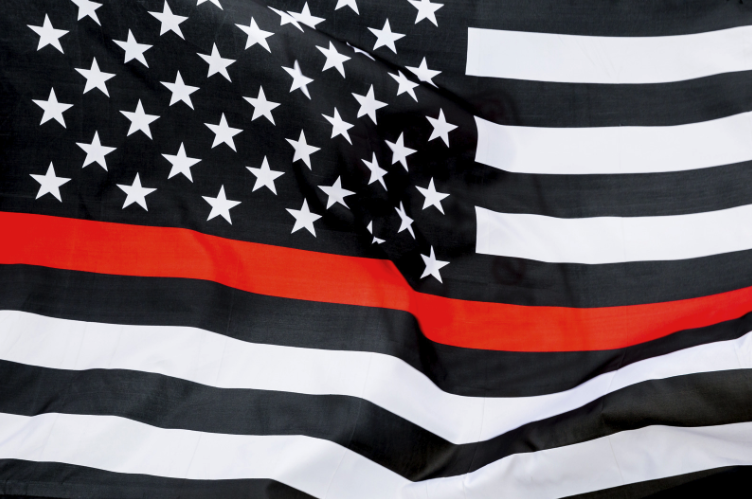
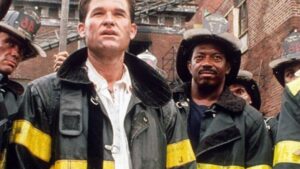
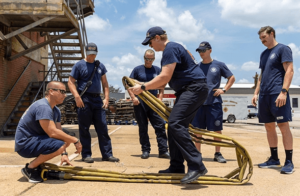
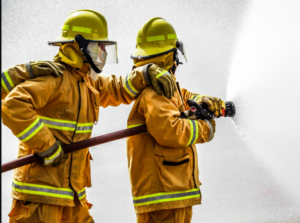
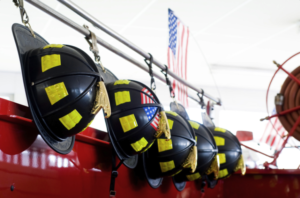
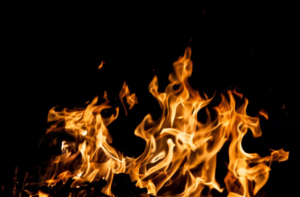
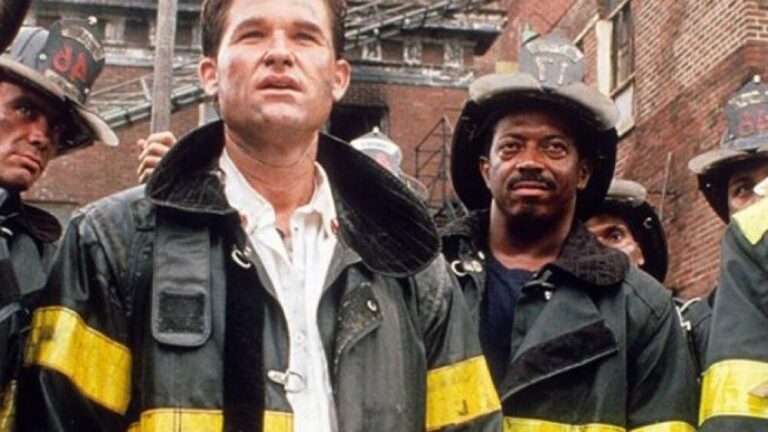

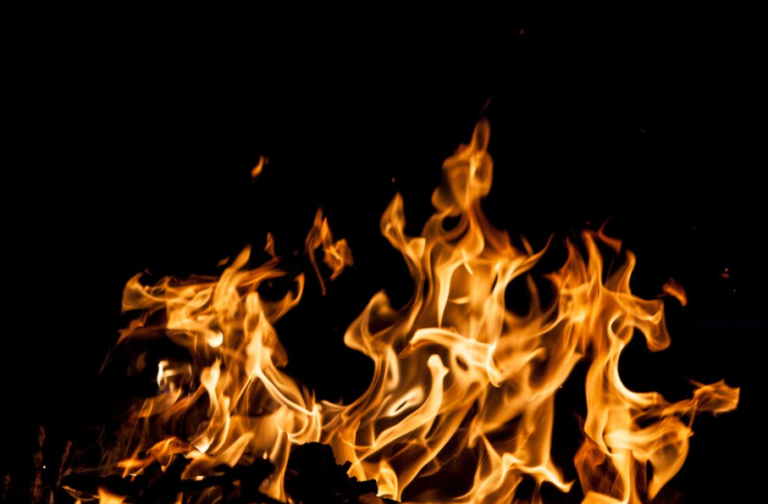
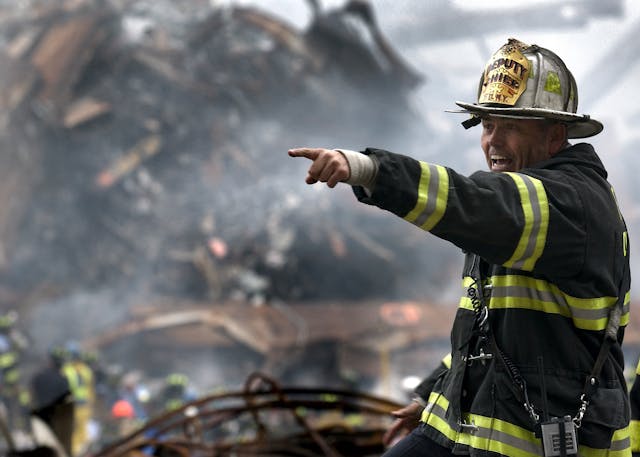
+ There are no comments
Add yours